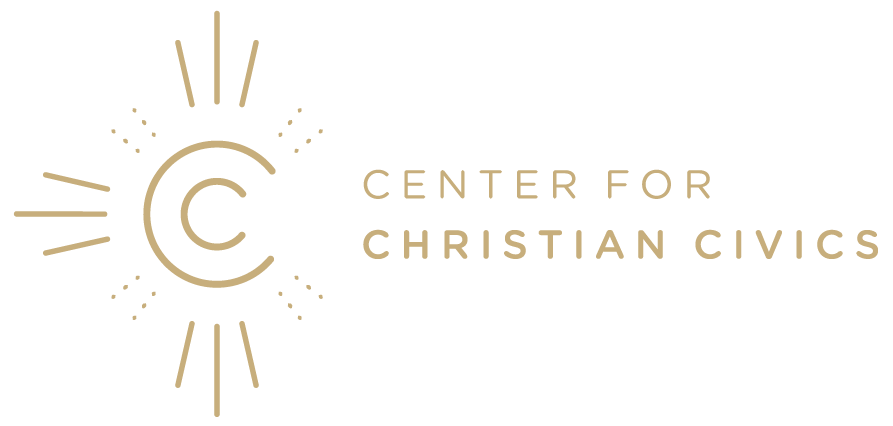Lord of the Middle Rings: Sociology, Fellowship and Prophetic Witness
"I'm glad you guys moved in by Halloween or it would have been a year before we met!"Those were the first words my neighbor spoke to my wife and me as her daughter held out a basket waiting for a King Size Snickers (first impressions, etc.). She wasn't wrong: the next time we spoke was the following Halloween as her daughter held out her basket waiting for a Fun Size Snickers (don’t judge us!).In our hurried, isolated lives, the opportunities to interact with our neighbors grow fewer and fewer. It turns out, this new normal isn’t just problematic for individuals, or even neighborhoods: New research is showing it’s actually a threat to the body politic at large. The communal fabric of America seems like it might be unraveling, but the church is uniquely equipped to mend it by being a prophetic witness for the common good.Let me back up.
Alexis de Tocqueville (1805–1859) was a French lawyer, politician, statesman, writer and minor noble. He traveled extensively, and his writing covered political economy, current events, and the history and culture of the countries he visited. In 1831, the French government sent him to the United States to write a report on our penitentiary system. As a result of that trip, he co-authored that report and wrote Democracy in America, which is his most enduring book in the United States.
For more on Tocqueville’s life, see Hugh Brogan’s biography. For a short introduction to his ideas, see Peter Augustine Lawler’s The Restless Mind; for an exploration of the relationship between his ideas and the Christian faith, consider Joshua Mitchell’s The Fragility of Freedom.Alexis de Tocqueville, who would have celebrated his 213th birthday this week, had the keen insight that America’s social life is the hallmark of its Democracy. Instead of being a “top-down” Monarchy, the burgeoning Republic was “bottom-up.” The genius of the American experiment, as far as Tocqueville was concerned, was the idea of “townships.”In his book The Vanishing Neighbor, Marc Dunkelman refers to this phenomenon by a different name. Instead of “townships” he refers to “middle rings” of social life. “Inner rings” of social engagement mostly include immediate family—your husband, wife, siblings, kids, parents, etc. “Outer rings,” on the other hand, refer to relationships with people you don’t live near or who you might not even know—your status as a citizen, membership in a political party, an affinity group or fandom you’re part of, your professional network, etc.Middle rings, however, are usually formal or informal voluntary institutions that help shape your daily life—groups like the Lions Club, churches, carpools, or homeowners associations, for example. The strength of these robust middle rings is part of what caused the cleavage between the Colonials and the Brits, leading to the American revolution. And as far as Tocqueville was concerned, strong, healthy middle rings were what made American politics functional.Today, much is made out of the collapse of the nuclear family (the inner ring), but Dunkelman points to data that paints a more complicated picture. Indeed, parents are actually spending more time with their kids now than twenty or thirty years ago, not less. For example, while 50 percent of parents had weekly conversation with their children in 1986, today some 67 percent of mothers report having daily contact with their adult children. Even as many of us spend more time interacting with our inner rings, social media naturally pulls us toward our outer rings, connecting us with, say, fellow sports fans from across the country.The upshot of the problem is this: If we are spending more time with our immediate families (inner rings) and committing more of our identity or our sense of self to looser, larger affinity groups (outer rings), that’s likely to mean we're investing less of our time and energy into our townships, our neighbors, or our “middle rings.” And that’s a problem, because those “middle ring” relationships have always been the best way to learn to talk to, understand and even care about people who think very differently—the sort of cooperation that’s required for a Republic to work.G.K. Chesterton’s commendation of townships on a human scale is instructive:
“The man who lives in a small community lives in a much larger world. He knows much more of the fierce varieties and uncompromising divergences of men. The reason is obvious. In a large community we can choose our companions. In a small community our companions are chosen for us.”
For as tense as family relationships can sometimes be, in the grand scheme of things, our inner ring tends to think and act a lot like we do; and we, of course, largely self-select our outer rings. So if we want to understand the “fierce varieties and uncompromising divergences of men,” we can only get that knowledge from those relationships in the middle ring of society. As goes the middle ring—Tocqueville’s townships or Richard John Neuhaus’ intermediate institutions—so goes politics at large.The problem is that the one ring that can give us such exposure is currently emaciated, forcing us to exist in louder and louder echo chambers. Says Dunkelman:
“A networked society doesn’t bring people with different experiences into contact with one another. Natural rhythms once put Americans from different stations in touch at the store, on the street, in the newspaper, even at church. Until fairly recently, the cross section of people who lived near one another passed the same billboards, watched the same television shows, and listened to the same radio stations. And so, whatever divided them—issues of race or ethnicity, political creed or religious affiliation—they were more familiar, if only perfunctorily, with the way other people approached the world.”
It’s here that the church has a unique role to play in the renewal of the Republic. In his book A New Heaven and a New Earth, J. Richard Middleton points out that Revelation 21:3 shifts from the singular to the plural in reference to God’s people:
“And I heard a loud voice from the throne saying, ‘Behold, the dwelling place of God is with man [singular]. He will dwell with them, and they will be his peoples [plural], and God himself will be with them as their God.’”
This shift, says Middleton, shows, “the general thrust of the biblical story, which expands the boundaries of the covenant people to include all humanity.” In the Old Testament, we learn that the children of Abraham will be as many as the stars in the sky and the sand on the seashore. (Gen 22:17) The surprise of the New Testament is that, through the New Covenant, those children will be made up of people from every tribe, tongue and nation. (Rev 5:9) In retrospect, God’s all-embracing mission could be seen in the earliest pages of Scripture, as Old Testament scholar Alec Motyer puts it:
“From the very beginning we see that whenever God narrowed his purpose down to the particular, it was in order that he might bring his grace to the universal… The Covenant which began with one man Noah, came to be expressed, after the Flood, in worldwide terms (Gen. 9:12–13) and to be symbolized by the world-embracing rainbow.”
Thus the biblical story from Abraham forward can be summed up as moving from a person (Abraham) to a people (Israel) to a person (Jesus) to all peoples (the multi-ethnic church). Currently, we’re living in the “peoples” part of the story, the final and climactic act. This can be seen by looking at where the church is located globally: 26% in Europe, 37% in the Americas, 24% in sub-Saharan Africa, and 13% in Asia and the Pacific. Of course, you can see the same reality by looking at local churches in which multiple families, races and cultures are represented.While Revelation 21:3 reminds us that the global church is not an inner ring made up of a particular family or blood type, it should also remind local churches that they are not outer rings united by shared political or socio-economic factors. At its best, the local church will reflect at least some of the beauty and diversity of the global church.Indeed, the church is nothing less than a sign of the present in-breaking of Jesus’ inclusive reign. It’s a sign that when Christ went down to the grave he secured the treasure once buried in a field. It’s a sign that the leaven of the kingdom is working its way through the dough of the world. Indeed, the melting of homogeneous worship can only mean the Spring of Pentecost is here; the King is summoning his peoples. Even if every other middle ring crumbles, local churches can stand firm as places where people of every color and background gather. The saved can’t be siloed.While a local church should by no means be the only middle ring to which a Christian belongs, it is the only one with such a supernatural origin, and thus the only one in which a Christian can fully trust, particularly at a time in which mediating institutions are eroding at such a dizzying speed. After all, it was not the Lions Club that Jesus told us could stand against the gates of hell. Unlike other mediating institutions, "the Church does not live by its organisations and its programmes" as Lesslie Newbigin reminds us. Rather, it "lives by the word of God given to it as the word spoken and acted.”

